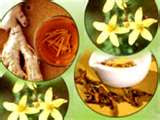 Majja : One of the seven dhatus- bone marrow.It is oily and soft tissue. Its main functions are to oleate the body; fill up the bone cavities and to nourship the sukra dhatu.
Majja : One of the seven dhatus- bone marrow.It is oily and soft tissue. Its main functions are to oleate the body; fill up the bone cavities and to nourship the sukra dhatu.Malas : Waste products. Primarily include urine, feaces and sweat.
Karma : Actoion; work; a complex concept, The world originally denoted a religious act or rite and gradually assumed other sades of meaning, as in action, work.
Kama : Desire. It is a sexual desire, one of the five signs the yogi must cut off; others being wrath, greed, fear and shleep.
Jeeva : Individual soul; Living being; the imerical self.
Guna : The three attributes of unfanifest prakriti, Which are in balance before the creation of evolutes, and whose imbalance continues the process of creation. Three gunas are satwa, raj and tama.
Ghee : Clarrified butter.
Dravya: The substance Of properties- one of the special properties water, fire, air, ether, time, space, soul and mind.
Dipanya : One that kindless the gastric fire; increases appetites. eg. pipali, ginger, black pepper and hing.
Dhatu : The basic nutritional and structural factors of the body; literally, to support or to nourish; there seven datus (tissues) in the body. The seven bodily tissues are rasa, racta, mamsa, meda, asthi, majja and sucra.
Dharma : Virtue, attribute, codition, righteousness; duty; prescribed course of conduct; nature or disposition; one's true chracter; about being a whole human being.
Dharana : Absorbing information into memory and reproducting same.
Churna : Powder.

